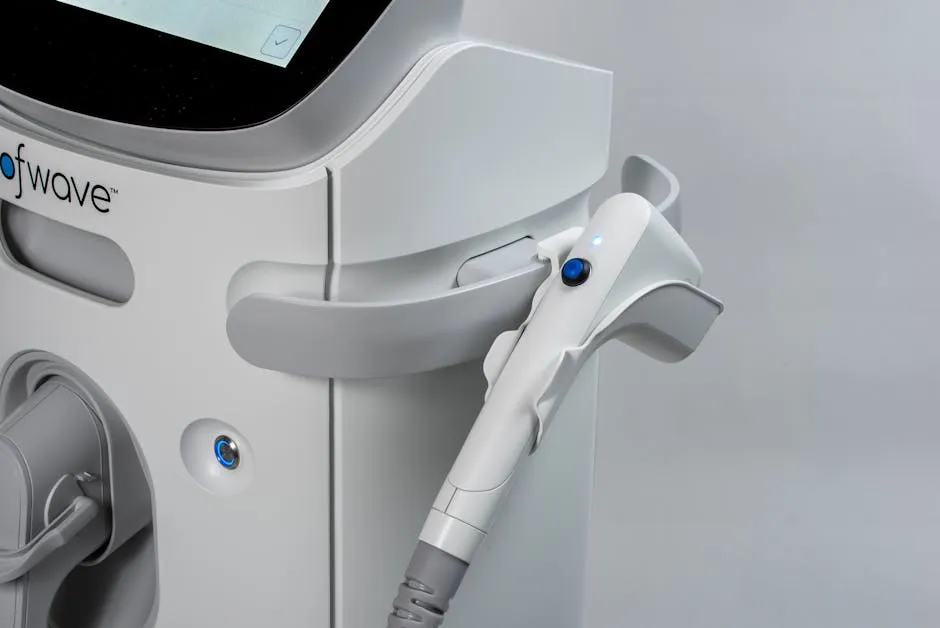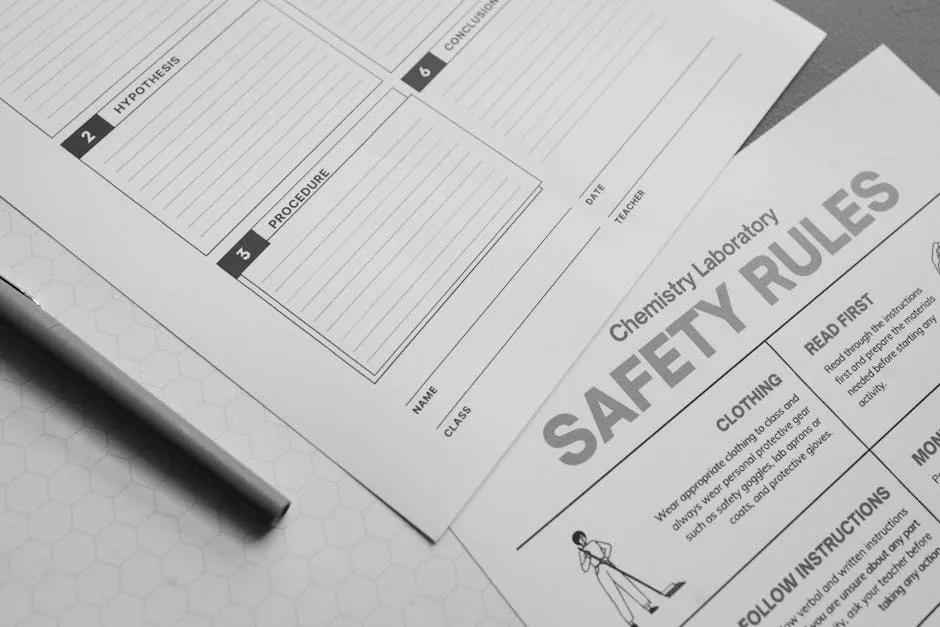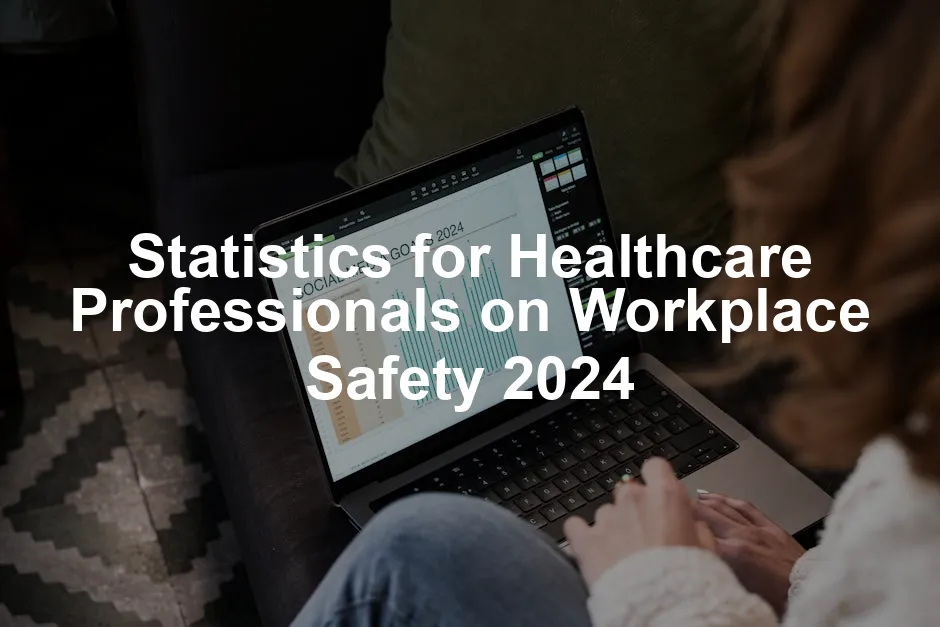Introduction
Workplace safety in healthcare settings is crucial. It’s not just about keeping employees safe; it’s about ensuring quality patient care. A safe environment leads to happier staff and healthier patients. Historical context shows that workplace safety standards have evolved significantly over the years. What was acceptable a decade ago is now deemed inadequate.
In the past, healthcare professionals faced numerous hazards, often with little support. Today, we have updated standards and better data that can guide us toward safer practices. The significance of updated statistics in 2024 cannot be overstated. They offer insights into current challenges and help shape effective policies.
With the rise of workplace violence and mental health concerns, it’s essential for healthcare professionals to be informed. This article aims to provide vital statistics and insights. These are not just numbers; they are calls to action for improving safety standards in healthcare environments, ensuring the well-being of those who care for others.

Current Landscape of Workplace Safety in Healthcare
Overview of Workplace Safety Challenges
Healthcare professionals face unique challenges daily. High rates of violence against staff are alarming. In fact, reported assaults against nursing personnel rose by 5% year-over-year in 2023. This means that healthcare workers are not just dealing with patients but also with increasing aggression from them.
Psychological stress is another significant challenge. Many professionals report burnout, anxiety, and depression due to the nature of their work. A staggering 46% of healthcare workers admitted feeling burnt out in 2022, a noticeable jump from previous years. This stress not only affects their well-being but also impacts patient care. When healthcare professionals are under duress, the quality of care can falter.
To combat stress, consider investing in a Stress Relief Coloring Book. It’s an enjoyable way to unwind and can help healthcare professionals channel their creativity while reducing anxiety levels. Plus, who doesn’t love a little coloring therapy?
The impact of workplace violence is multifaceted. It’s not just physical harm; it creates an environment filled with fear and uncertainty. Many healthcare workers feel unsafe at their workplaces, leading to high turnover rates and reduced job satisfaction. According to a recent survey, 63% of health workers reported experiencing some form of violence at work. For more in-depth statistics on this issue, check out our detailed analysis on healthcare workplace violence statistics in Virginia.
Understanding the statistics surrounding workplace violence is crucial for healthcare professionals. Explore the healthcare workplace violence statistics in Virginia to gain insights into the challenges faced in this field.
Furthermore, the COVID-19 pandemic exacerbated existing issues. It heightened tensions, leading to more aggressive behaviors from patients. The need for organizations to implement effective violence prevention programs has become more pressing than ever. By understanding these challenges, healthcare professionals can advocate for better safety measures and policies.
The unique challenges faced by healthcare workers underscore the importance of prioritizing workplace safety. These statistics paint a stark picture of the realities on the ground, emphasizing the need for proactive measures to create a safer environment for both staff and patients.

Key Statistics (2024)
Workplace safety in healthcare is a pressing issue, particularly in 2024. The statistics illuminate the harsh realities faced by healthcare professionals. Let’s break it down with some eye-opening figures.
First off, violence against healthcare workers is alarming. In fact, reported assaults against nursing staff surged by 5% year-over-year, reaching a rate of 2.71 assaults per 100 nursing personnel. This is a stark reminder that healthcare environments can be hostile.
Moreover, a significant 63% of health workers reported feeling unsafe at their workplaces. This sense of insecurity can lead to decreased morale and increased turnover rates. It’s a cycle that needs breaking.
Mental health issues are also rampant. A staggering 46% of healthcare professionals reported experiencing burnout in 2022, a steep rise from previous years. The toll of long hours, high-stress situations, and insufficient support systems is palpable.
According to the CDC, nearly two million U.S. workers are victims of workplace violence each year. This statistic underscores the urgent need for effective violence prevention strategies in healthcare settings.
In addition, the World Health Organization revealed that 54% of health workers in low- and middle-income countries have latent tuberculosis. This statistic highlights the biological hazards that healthcare professionals face daily.
The numbers don’t lie. They reflect an industry grappling with significant safety challenges. As the data indicates, addressing workplace safety in healthcare is not just a regulatory obligation; it’s a moral imperative. By understanding the statistics, healthcare institutions can take crucial steps toward creating safer environments for their invaluable workforce.

Societal Influences on Workplace Safety
Societal issues bear a significant impact on workplace safety in healthcare settings. The interplay of mental health crises and economic pressures creates an environment ripe for challenges. Let’s unpack how these societal factors affect healthcare professionals and their work environments.
Mental health has become a pressing concern, not just for patients but also for healthcare workers. A recent study found that 86% of employees believe their employers must do more to address mental health needs. Burnout, fueled by long hours and emotional strain, has reached alarming levels. In fact, 46% of healthcare professionals reported feeling burned out in 2022, a sharp rise from previous years. This trend isn’t just a personal issue; it directly impacts the quality of care provided to patients. When staff members are overwhelmed, patient safety takes a hit.
Economic pressures also play a role. Many healthcare organizations face budget constraints, leading to understaffing. A study revealed that 63% of healthcare workers felt unsafe in their workplace, pointing to a systemic problem. Underfunded safety measures and inadequate resources can exacerbate workplace violence. In 2023, reported assaults against nursing personnel surged by 5%, bringing the rate to 2.71 assaults per 100 nursing personnel. This alarming statistic emphasizes the urgent need for effective violence prevention strategies.
Workplace violence in healthcare settings is not a new issue. The Occupational Safety and Health Administration (OSHA) reports that nearly two million U.S. workers are victims of workplace violence each year. This startling figure highlights the need for comprehensive safety measures. The societal expectation for safe work environments clashes with the reality that many healthcare workers face daily.
Moreover, the cultural stigma surrounding mental health can prevent healthcare professionals from seeking help, thus perpetuating the cycle of stress and violence. A 2023 CDC report found that harassment in the workplace among healthcare workers rose from 6% in 2018 to 13% in 2022. Such statistics reveal a clear trend that cannot be ignored.
In summary, societal issues like mental health crises and economic pressures significantly influence workplace safety in healthcare. The statistics paint a vivid picture of an industry under strain. Addressing these challenges requires a concerted effort from healthcare organizations, policymakers, and society as a whole. By fostering a culture that prioritizes mental well-being and ensuring adequate resources are allocated for safety, we can create a healthier work environment for those who care for us.

Role of Technology in Enhancing Safety
In today’s fast-paced healthcare environment, innovative technologies are stepping up to the plate, swinging for the fences when it comes to workplace safety. From panic buttons to surveillance systems, these gadgets are more than just shiny new toys—they’re essential tools for creating safer workspaces.
Panic buttons, for example, have become a lifeline for many healthcare workers. They offer a quick way to summon help during emergencies. A recent study found that healthcare facilities implementing panic buttons reported a 39% reduction in incidents of violence. This shows just how effective these simple devices can be in alleviating fears and enhancing safety.
Surveillance systems are another game-changer. These systems not only monitor activities but also deter potential aggressors. Facilities equipped with surveillance technologies reported a 24% decrease in worker compensation claims related to workplace violence. When people know they’re being watched, they tend to think twice before acting out.
To enhance your surveillance, consider a Surveillance Camera System. This tech not only protects healthcare workers but also provides peace of mind, knowing that every corner is monitored. Plus, it can help deter potential troublemakers!
But technology doesn’t stop there. Advanced reporting software and incident management systems are also on the rise. These platforms allow for real-time data collection and analysis, giving organizations the insights they need to address safety concerns. They help identify trends, highlight problem areas, and facilitate targeted interventions.
All these innovations contribute to a significant drop in workplace incidents. In fact, organizations that embraced technology for safety reported a 55% improvement in staff confidence regarding workplace safety plans. When employees feel secure, they can focus on what truly matters: providing top-notch care to their patients.
The effectiveness of these technologies is clear. By integrating them into everyday operations, healthcare facilities can create safer environments for their staff. These advancements not only protect healthcare workers but also enhance the overall quality of patient care. With the right tools, we can build a safer future for everyone involved in healthcare.

Case Studies and Real-Life Examples
Successful Implementation of Safety Programs
Workplace safety in healthcare isn’t just a buzzword; it can be a game changer. Let’s look at some organizations that have turned their safety culture around. One notable case is the University of California, San Francisco (UCSF) Medical Center. They implemented a comprehensive workplace violence prevention program. Before this initiative, the center recorded a staggering 70 incidents of workplace violence each year. After rolling out their new program, that number plummeted to just 12 incidents within two years. Talk about a success story!
Another inspiring example comes from the Behavioral Wellness Center at Girard in Philadelphia. They introduced wireless panic buttons aimed at improving incident response. The results were impressive: incidents between patients and staff decreased by 39%, and worker compensation claims fell by 24%. This not only boosted safety but also enhanced staff morale, showing that technology can play a role in keeping healthcare workers safe.
To ensure your own safety and preparedness, consider having a First Aid Kit readily available. Accidents can happen in a flash, and being prepared can save lives!
The statistics speak volumes. The American Nurses Association reported that hospitals implementing safety programs saw a 30% reduction in workplace injuries. These cases illustrate that with the right strategies, healthcare facilities can effectively mitigate risks and create a safer working environment. It’s a win-win for everyone involved: healthcare professionals feel safe, and patients receive better care.

Lessons Learned
What can we learn from these success stories? First, comprehensive safety programs are crucial. They must address the unique challenges that healthcare workers face. This includes training staff on recognizing and responding to potential threats. Organizations that prioritize education see a marked decrease in incidents.
Second, involving employees in safety initiatives proves beneficial. When healthcare workers feel empowered to voice their concerns, they contribute to a culture of safety. This collaborative approach fosters trust and open communication, which are vital for effective safety management.
Lastly, embracing technology can significantly enhance safety measures. Panic buttons, surveillance systems, and incident reporting software provide quick responses to emergencies. These tools not only protect staff but also improve patient outcomes.
In summary, successful implementation of safety programs results from strategic planning, employee involvement, and leveraging technology. By applying these lessons, healthcare organizations can cultivate a safer workplace, ensuring that their staff can focus on what they do best: providing patient care.

Conclusion
The landscape of workplace safety in healthcare is changing, and the statistics highlight just how crucial it is. We’ve explored the importance of a solid safety culture, the unique challenges healthcare professionals face, and the strategies that can significantly improve safety outcomes.
Continuous improvement is essential. The statistics reveal that nearly 63% of healthcare workers report feeling unsafe at work. This alarming figure emphasizes the need for ongoing education and resources. By staying informed about the latest safety statistics, healthcare professionals can advocate more effectively for better safety measures.
It’s time for healthcare professionals to take a stand. Advocate for improved safety protocols, support colleagues in their safety endeavors, and push for the implementation of effective programs. Together, we can create a safer environment for everyone involved. Safety isn’t just a priority; it should be a fundamental right in every healthcare setting.
Let’s make workplace safety a shared responsibility. The well-being of healthcare workers and patients alike depends on it. After all, when healthcare professionals feel safe, the quality of care inevitably improves. So, let’s rally together and champion workplace safety in healthcare!
FAQs
What are the most common workplace hazards for healthcare professionals?
Healthcare professionals face a variety of hazards. According to recent statistics, physical hazards like slips, falls, and sharps injuries are prevalent. In fact, 385,000 sharps-related injuries occur annually in hospitals. Psychological hazards, such as workplace violence and burnout, are also significant. A staggering 46% of healthcare workers reported feeling burnt out in 2022. These factors contribute to a challenging work environment, making it vital for organizations to address these issues proactively.
How can healthcare organizations improve workplace safety?
Healthcare organizations can enhance safety through several strategies. First, implementing comprehensive training programs on recognizing and responding to workplace hazards is essential. Second, fostering a culture of open communication encourages staff to voice safety concerns without fear. Finally, investing in technology, such as panic buttons and surveillance systems, can provide immediate support during emergencies.
What role does technology play in improving workplace safety?
Technology serves as a valuable ally in promoting workplace safety. For instance, panic buttons allow healthcare workers to quickly alert security during emergencies. Surveillance systems can deter potential aggressors while also providing evidence when incidents occur. Data analytics tools help organizations track safety incidents and identify trends, leading to better-informed safety strategies.
How do workplace safety statistics affect patient care?
Workplace safety statistics directly impact patient care. As healthcare professionals experience a safer environment, they can focus more on providing quality care. Research shows a direct correlation between staff safety and patient outcomes. When healthcare workers feel secure, they are better equipped to deliver compassionate and efficient care.
What resources are available for healthcare professionals to learn more about workplace safety?
Numerous resources are available for healthcare professionals seeking to improve workplace safety. Organizations like the Occupational Safety and Health Administration (OSHA) provide guidelines and training materials. The American Nurses Association offers resources on workplace violence prevention. Additionally, many hospitals and health systems conduct regular safety trainings and workshops to keep staff informed and engaged.
Please let us know what you think about our content by leaving a comment down below!
Thank you for reading till here 🙂
All images from Pexels




